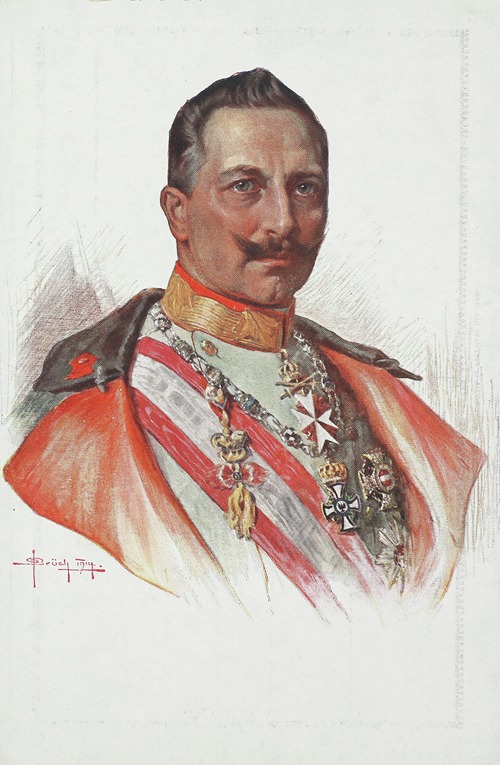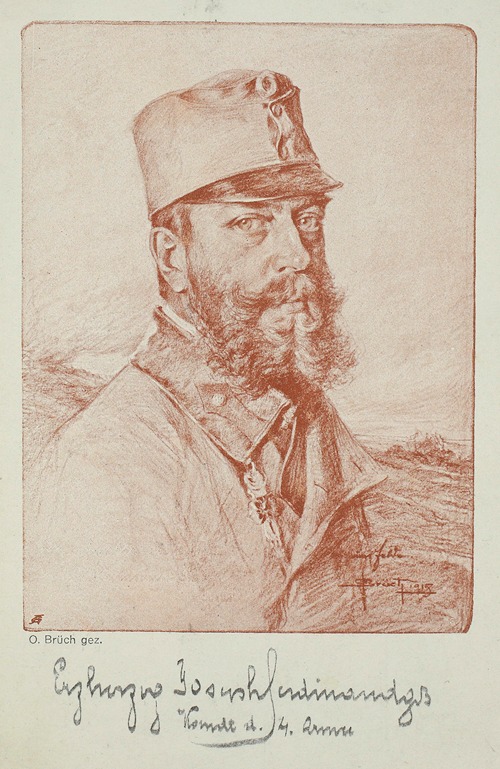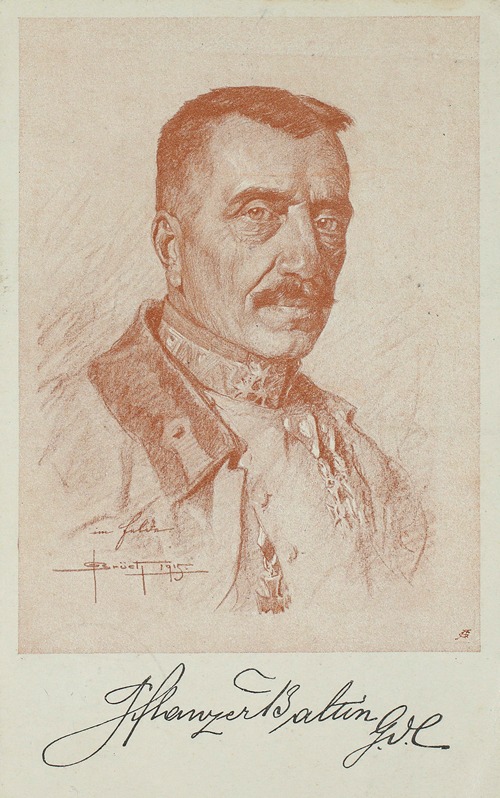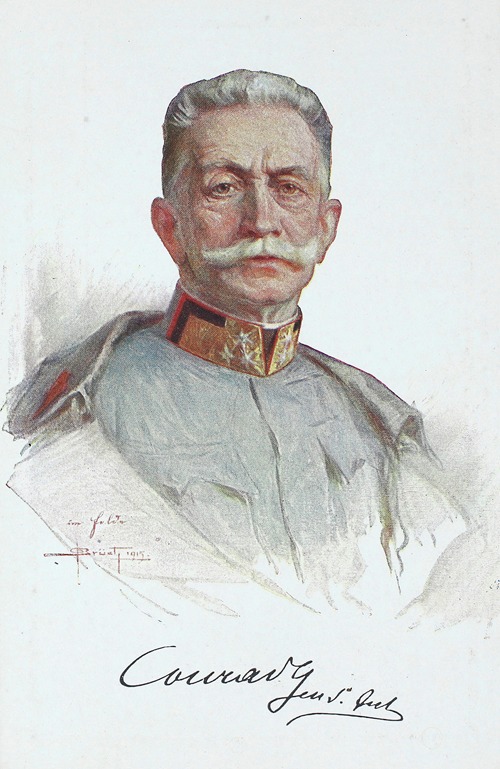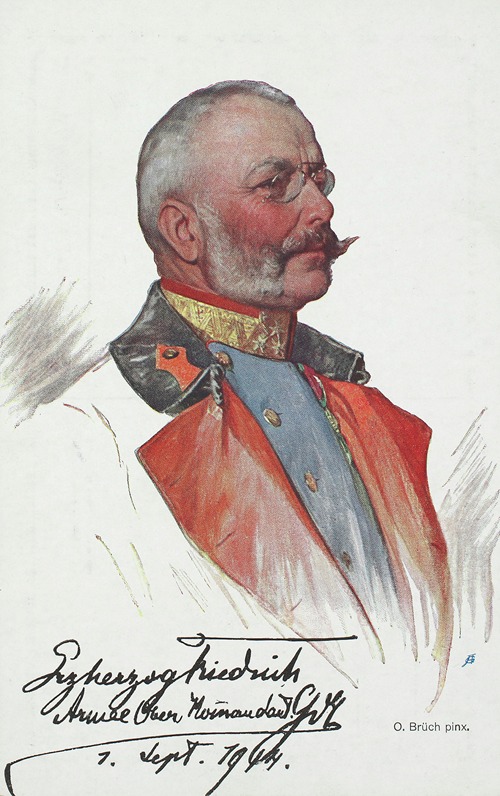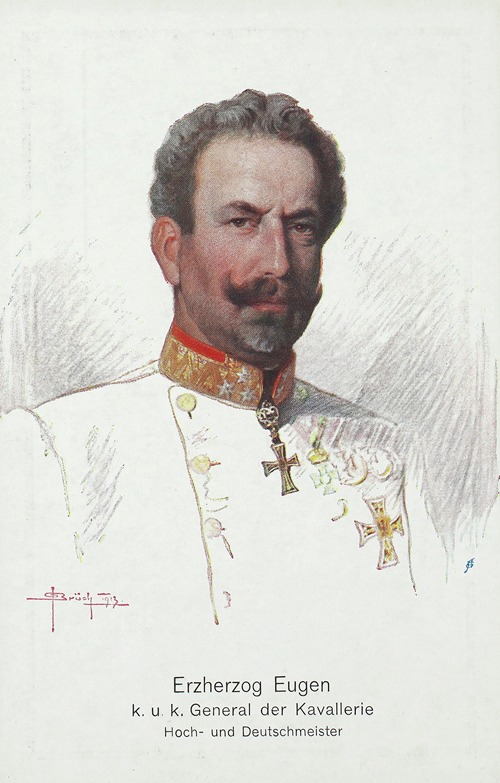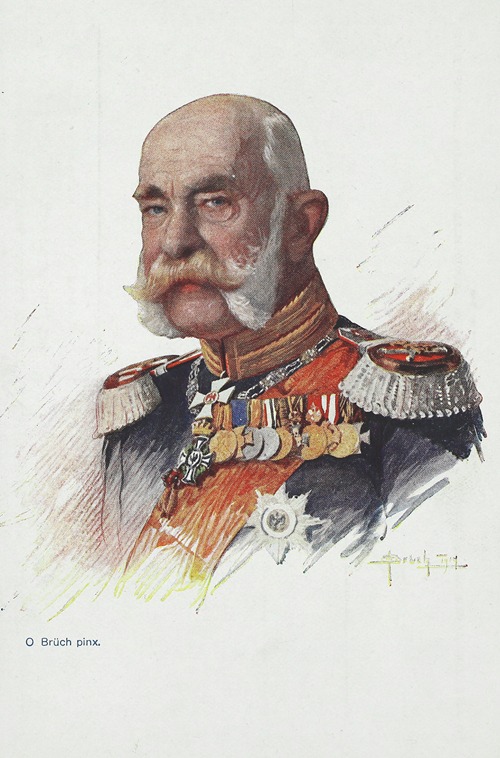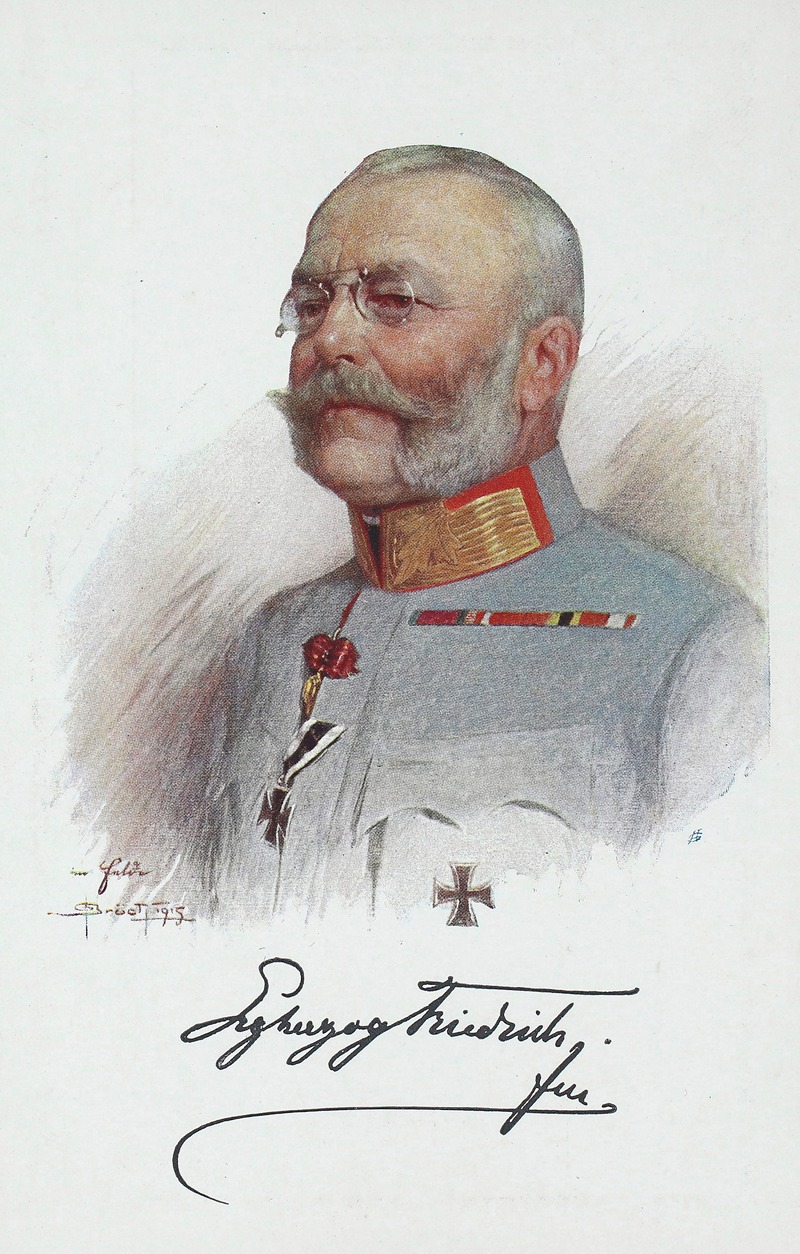
Oskar Brüch was an Austrian portrait and military painter.
Brüch was the son of an imperial officer and graduated from military school and the Theresian Military Academy in Wiener Neustadt. During his time at the academy, he gained artistic recognition in the form of a gold watch, which was presented to him by Emperor Franz Joseph I for a drawing dedicated to him. In 1891, Brüch joined the Imperial and Royal Infantry Regiment No. 6. In 1894, he was transferred to the Military Geographical Institute, where he spent his free time studying painting.
On November 1, 1895, Brüch was promoted to first lieutenant and at the same time commissioned by the Reich War Ministry to paint 33 pictures for the Millennium Exhibition of 1896 in Hungary, which were to document the uniform of the joint imperial-royal army at the time of the exhibition. After completing this series, he was appointed drawing teacher at the Infantry Cadet School in Vienna from 1897 to 1901. During this time, Brüch had the opportunity to devote himself to studying art, spending two years at the Munich Academy under Wilhelm von Diez.
From 1903, Brüch was transferred to the reserve and worked as a freelance artist, becoming a well-known and sought-after portrait painter. The last portraits painted by the emperor were also by Brüch.
At the outbreak of the First World War, Brüch was called up to the army as a captain. In 1915, he published a collection of portraits entitled “Unsere Heerführer” (Our Army Commanders), which was widely distributed. Brüch was also an official war painter in the Austro-Hungarian War Press Headquarters.
Brüch spent his twilight years in Ticino, became a Swiss citizen, and died on March 31, 1943, in Melide, Switzerland.
